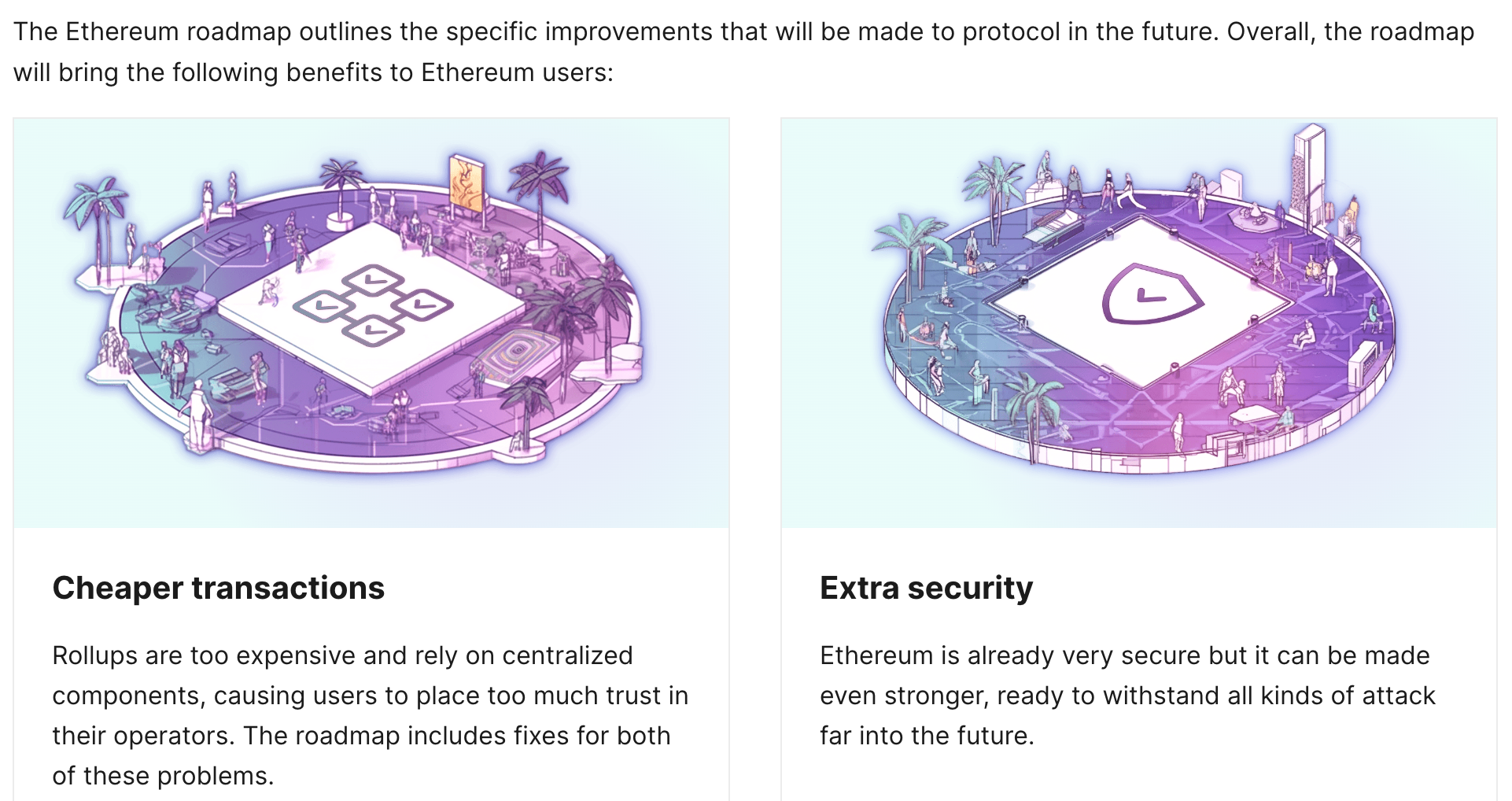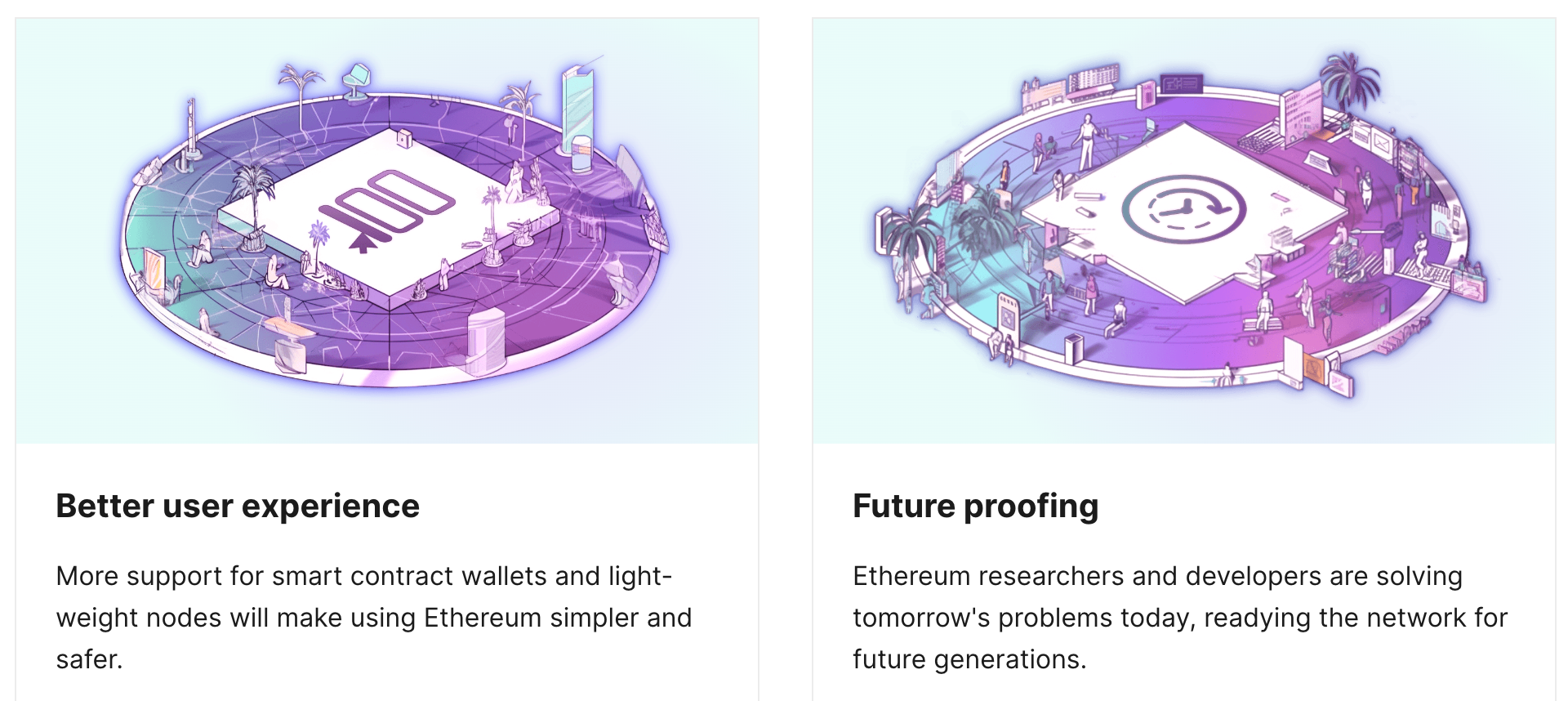The Surge | Entering new territory on the Ethereum roadmap
The Ethereum community just achieved another ambitious scaling milestone. This post dives into more background and context about Ethereum's roadmap and why it matters.

Ethereum hit another big milestone this week on its ambitious roadmap to become a faster, cheaper, and more secure decentralized blockchain.
The latest upgrade, known as DenCun or Cancun-Deneb upgrade, launched on Wednesday. Hours later the impact of the upgrade became clear as all corners of onchain operators were reporting cheaper transactions. In some cases, fees to settle transactions drop by 100x.
At the heart of the long-planned DenCun update was a specific upgrade called Ethereum Improvement Proposal 4844, or EIP-4844, which is designed specifically to make it easier for rollups (a tech stack built on top of Ethereum with scaling in mind) to manage data. The new methods make rollup transactions faster and cheaper using something called blobs.

FInd more context about the recent Ethereum update.
There are multiple takeaways from the successful launch of Ethereum’s latest upgrade. Maybe the biggest was watching the almost immediate impact on transaction cost. This alone will likely have huge implications on the next innovation cycle — as onchain activity becomes cheaper, it also becomes more accessible for app developers and service providers.
The second reason the upgrade is fascinating is because it’s just one part of continual improvements to make Ethereum better as an open and secure decentralized network. These improvements are outlined and articulated as a roadmap.
Each milestone achieved demonstrates the power of Ethereum’s developer community and shows that the Ethereum Foundation and other major stakeholders can continually upgrade the network and deliver on an ambitious vision.
What is Ethereum’s roadmap?
When Ethereum first launched in 2015 as a smart contract platform, early developers positioned it as a more modular and customizable blockchain when compared to Bitcoin at the time.
Ethereum’s main value proposition was the ability for people to easily create token systems by using smart contracts and token standards. This meant that if someone had a good idea for a new onchain product or service they could build it to their specs or accomplish their goal — like a stablecoin or a prediction market or a lending platform — without having to spin up a new protocol.
Instead, they could build a token system on top of Ethereum, leveraging its underlying security, dev community, and network effects, all while pursuing their specific token objectives.
Big picture-wise this led to the creation of entire sectors, like decentralized finance (DeFi) and early non-fungible tokens (NFTs).
More recently, it’s led to the idea of modularity in blockchain or using the composability of crypto can be thought of as Lego and different aspects can be put together to build new things.
In part, there’s been a massive cycle here in a way. From the early days, Ethereum scaled to a point where it started hitting bottlenecks of speed and cost — and building new kinds of products and services became prohibitive.
This led to the concept of rollups, which again are designed specifically to scale Ethereum (and other blockchains). But for rollups to work, the underlying Ethereum infrastructure had to also evolve, which brings us back to blobs.

Get more background on rollups
Data blobs, made possible by EIP 4844, are just one stop on a massive roadmap to keep improving Ethereum. The roadmap has various components that are all designed to address the specific needs of Ethereum as it looks to grow and become competitive with legacy payment and data networks in terms of speed and cost, while also maintaining robust data security, and remaining completely decentralized.
The latest DenCun upgrade is part of the roadmap’s “Surge” plan.
The Surge follows in the footsteps of the Merge. The Merge, which went live in September 2022, switched Ethereum's consensus mechanism from proof-of-work to proof-of-stake. It was a massive feat of engineering to switch the blockchain without any interruption to the underlying functioning while staying decentralized.

There are several other chapters planned following the Merge and the Surge including:
-
The Scourge: Designed to make Ethereum more censorship-resistant and decentralized
-
The Verge: Upgrades and optimizes the ability to verify blocks
-
The Purge: Simplifies the protocol to make operations more efficient
-
The Splurge: A bucket for ad-hoc projects designed for overall protocol improvement
This division of the roadmap into clever-sounding chapters is the vision of Vitalik Buterin, one of the co-founders of Ethereum. Notably, the Ethereum Foundation (a non-profit set up and funded by early sales of Ethereum and tasked with shepherding development and research at the protocol level doesn’t use the Taylor Swift Eras Tour-style naming conventions.
The other notable thing is that while the roadmap does feel neatly divided into eras, and there are very public milestones associated with each phase — like this week’s EIP 4844 launch — work on all of the upgrades is happening in the background and is ongoing.

Why does “the Surge” or the Ethereum’s roadmap matter?
My take is that in the future MBA students will study how the Ethereum community can continually execute an ambitious roadmap while not causing any major disruptions or issues. It is like building a plane while flying it.
So our future MBA students, who are likely studying decentralized systems and strategy, will look to Ethereum as a new model of human organization and coordination.
In a time when big institutions and even well-funded companies seem to struggle with executing change in an efficient and orderly way, it feels striking that a community of developers all with different interests and ideas can work together to continually improve a decentralized protocol with a global user base — and with billions of dollars at stake.
Sometimes, with day-to-day movements of the market and the chatter of the crypto news or the distractions of memecoins, it’s easy to lose sight of why the onchain movement is so interesting and why it's so important.
The successful upgrades of Ethereum will allow more people to move onchain because transactions will be faster and cheaper. But moving onchain also gives people more options and it represents a new way for us to communicate, organize, and make progress.